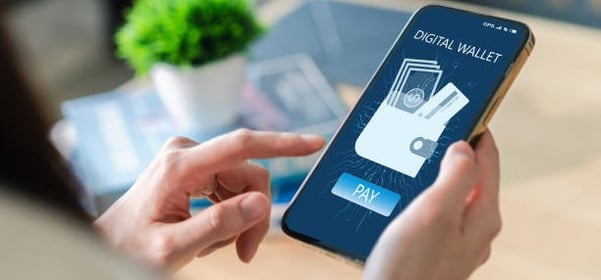From Barter to Bitcoin: The Complete Evolution of Trade and Digital Money in 2025
Explore the evolution of trade from bartering to blockchain. Learn how Bitcoin and digital finance are reshaping global commerce in 2025 and beyond.
DIGITAL INNOVATION
Hassan Abdullah
4/25/20254 min read


Trading is as old as civilization, if we ever noticed the evolution of trade from the ancient barter system
to the complex blockchain transaction. This is a remarkable story of the human progress. This whole
journey revealed how societies adapt the innovation to make the exchange of value, faster, safer and
efficient.
The barter system: The first method of trade
Barter is the exchange of goods for goods. Long before the invention of currency people were engaged
in barter trade mostly in small communities, exchanging good and services directly. For example “A
farmer might trade grains for the tool”, while barter have limitations.
It required double coincidence wants, like both parties had to want what other offer.
There is no standard unit of value, which make the negotiation difficult.
This system was not compatible with the complex and long distance transactions.
As communities grow, the new system for trading was in clear need.
Commodity Money: The First Evolution of Currency
Commodity money’s value come from the commodity of which it is made. To overcome the limitations
of bartering, early civilizations started using commodity money , items like salt, spices and cowry shells
which held universal value, with passage of time converted to metal coins made of gold, silver, and
copper. The creation of coin is massive shifts in trading system due to durability and transportability and
also have consistent value.
With more growth in communities’ commodity money also start showing flaws due to some limitations:
Difficult to transport and store
High production cost
Security concerns
The Invention of Paper Money and Banking:
The invention of paper money is widely credited to the Chinese civilization. A merchant in Sichuan
province began issuing promissory notes (Jiaozi) which could be exchanged for coins at the time of
Song dynasty (960-1279). The name paper money was given by Marko Polo after a visit to China at the
time of Mongol Yuan dynasty (1260-1368).Paper money make it so easier to carry in high value.
Emergence of banks:
Bank started issuing banknotes backed by precious metal. The standard of that metal provide stability
and trust to the paper money.
Eventually, this evolved into fiat currency, currency backed by the trust of banks and governments.
The Rise of Digital Trade and E-Commerce:
The 20th century bring us another advancement which is digitalization of currency. With debit card,
online banking, and electronic funds transfer, cash become optional. At the same time, internet give rise
to the E-commerce which change the face of trading in the new era.
Platform like Amazon, Alibaba, and Ebay give opportunity to both the seller and consumer to engage in
the business from the comfort of their home. Wallets like Google pay, apple pay, stripe, and PayPal
make the cross-border payment more easy and accessible.
The Cryptocurrency Revolution: Bitcoin and Blockchain
In 2009, Bitcoin emerged as the world’s first decentralized digital currency. Blockchain technology
introduced a transparent system where transaction is recorded in public ledger and verified by network
of computers.
Bitcoin was one of the bold experiment in Decentralized finance (DeFi). It was a response to the global
financial crisis. This system allow peer to peer (P2P) transaction without the involvement of banks or
governments. Other currencies like Ethereum, Cardano, XRP, and Doge are soon to follow. Some of the
some assistance of Crypto currency to the system are:
Borderless payments with low fees.
Financial inclusion for unbanked populations.
Protection from inflation in unstable economies.
Transparent, tamper-proof transactions.
Real-Life Use Cases of Modern Trade:
Here’s is how modern trade is transforming:
A person based in Pakistan work for a US client and get his payment in the Bitcoin or other
cryptocurrency.
An artist in Brazil is selling his NFTs without any Art galleries.
Businessman in Africa use stable coin to avoid inflation due to local currency.
These are some basic examples which shows the impact of crypto currency and blockchain in shaping
the face commerce.
Challenges in the New Age of Trade:
With so much ease there must be some difficulties, let’s discuss them;
Volatility of digital assets.
Regulatory uncertainty in many countries.
Security concerns around digital wallets and exchanges.
Environmental impact of blockchain mining (though this is improving with greener solutions like
Ethereum 2.0).
Governments are responding with Central Bank Digital Currencies (CBDCs), blending the best of crypto and traditional finance to create safe, efficient digital money.
Check out my blog on digital freedom to secure your privacy and freedom in digital space:https://thinkytalks.com/digital-freedom-crypto-updates-blockchain-trends
The Future of Trade: What's Next?
The next phase of trade is powered by:
Artificial intelligence optimizing supply chains.
Smart contract will be automating the payments and transactions.
Tokenization of Assets like in real estate and art. (People will have a fraction of asset digitally)
Web 3 and DeFi creating new stabilize economies.
Well, as we move forward new innovations will break barriers, creating a more inclusive economy.
From Ancient Markets to Digital Currencies:
If we look at the journey from exchanging cattle’s to transferring Bitcoin, it reflects our need to connect,
collaborate and create a value. Each step from bartering to blockchain solve the specific problem and
brought us to more stabilize and efficient economy.
In 2025 and beyond, those who understand the evolution of trade and embrace digital finance will be
better positioned to thrive in the future of money.
Subscribe to Thinky Talk for daily crypto updates, smart passive income strategies, and expert tips to protect your digital freedom.
Frequent Asked Questions (FAQs)
Q. What is barter and how is it different from cryptocurrency?
A. Barter is the direct exchange of goods without money, while cryptocurrency is a digital form of money used to exchange value online, often without intermediaries like banks.
Q Is Bitcoin the future of trade?
A. Bitcoin represents a major shift in how we exchange value, offering decentralized, borderless transactions. While it may not replace all forms of currency, it plays a growing role in the future of finance.
Q. What are the main benefits of using blockchain for trade?
A. Blockchain offers transparency, reduced fraud, lower transaction fees, and fast peer-to-peer payments, making it ideal for global trade and financial inclusion.
Q. How can I start building passive income with crypto?
A. You can explore options like staking, yield farming, and investing in dividend-paying tokens or stable coin strategies. Always research and manage risk carefully.
check this out for generating passive income : https://thinkytalks.com/passive-income-streams-in-2025




Thinky Talks
Stay updated on crypto, blockchain, and innovation.
© 2025. All rights reserved.
